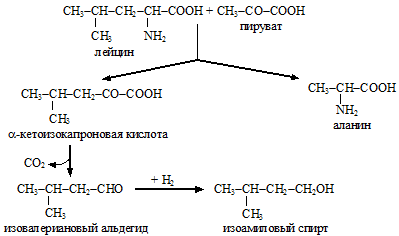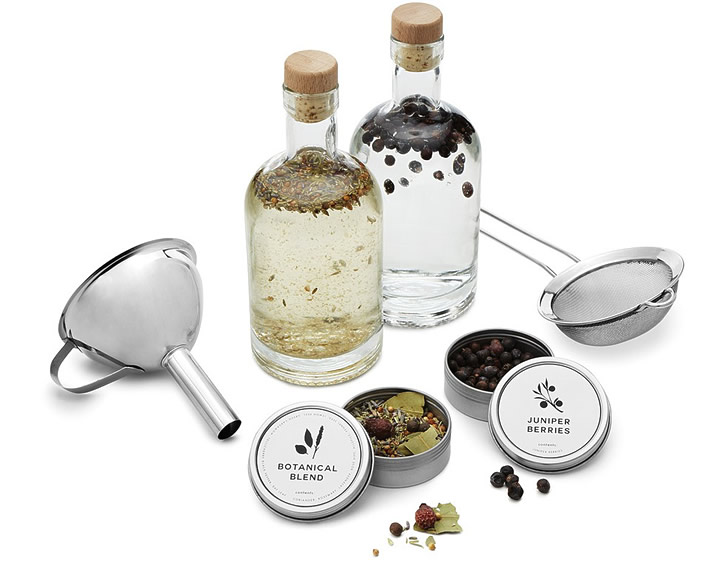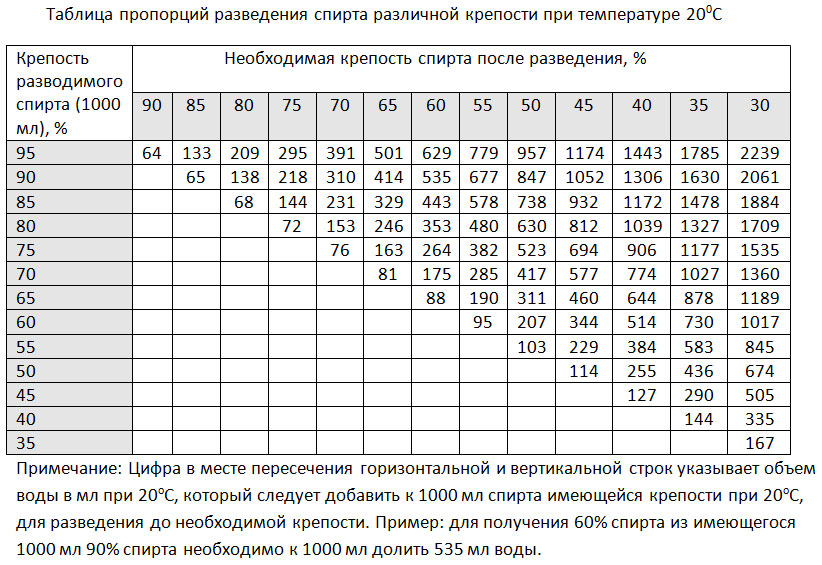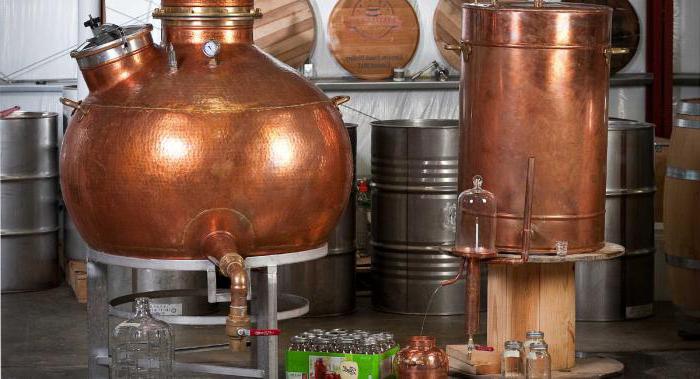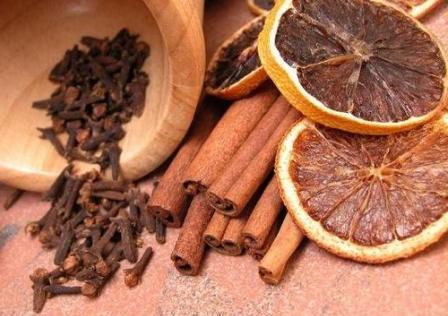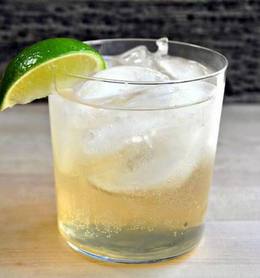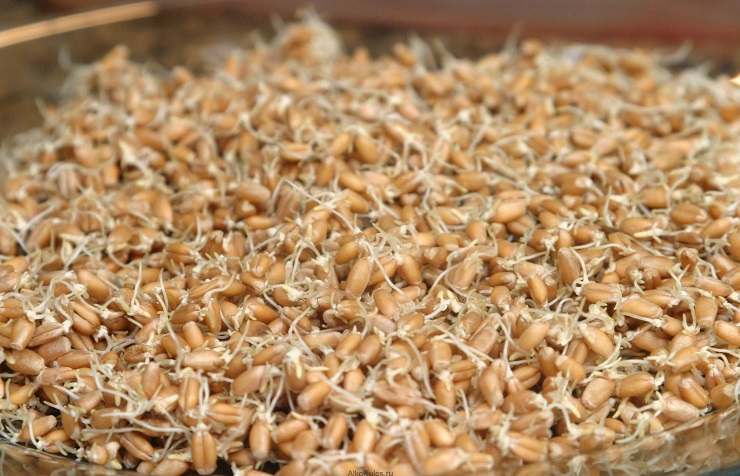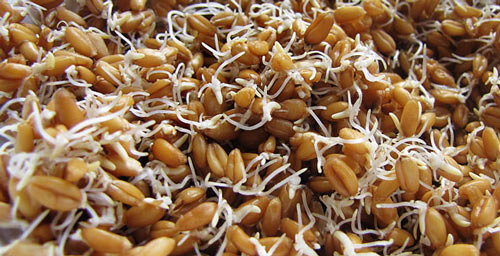What pressed yeast is made of. Dry yeast
The chemical composition of baker's yeast depends on the composition of the nutrient medium, cultivation conditions, physiological state of the cell, and other factors, and can vary widely.
Fresh pressed yeast contains about 75% moisture and 25% dry matter. On average, the dry matter of yeast contains (in%): proteins –50, carbohydrates –40.8, fats –1.6, ashes –7.6. In addition, Li, Ag, Au, Fn, Sr, Ba, B, La, Te, Ti, Sn, Bi, Cr, Mo, Co, Ni, etc. are present in yeast in microdoses.
Free water is a solvent solids cell juice.
Proteins of yeast in amino acid composition are close to animal proteins superior to plant proteins in the content of essential amino acids (lysine, leucine, threonine).
The yeast contains glutathione tripeptide (0.65% by weight of CB), which activates the protease of flour.
Yeast enzymes perform all functions: respiration or fermentation and reproduction. Enzymatic activity of baker's yeast is one of the main indicators of their quality. The complex of enzymes involved in alcoholic fermentation is called zymase. About zymase activity of yeast is judged by their lifting force. Maltase activity of yeast is determined by the rate of fermentation of maltose. Yeast can have a high rate of lift, but low maltase activity, as a result of which the proofing of the dough pieces will be slower, since the dough that does not contain sugar will contain only maltose formed from starch. Maltose is not able to diffuse into the cell; it must first be hydrolyzed by yeast maltase to two glucose molecules.
3.4. Getting pressed yeast
Yeast production occurs in three stages: the preparation of a nutrient medium, the cultivation of yeast, the isolation of yeast.
Preparation of culture medium
The raw material in the production of pressed yeast is molasses, which is a waste of sugar beet production by centrifugation of massecuite 2 product. It is a syrupy liquid of dark brown color with a specific taste and smell, containing 60-80% solids, the main component of which is sucrose.
Molasses composition: 40-54% - fermentable sugars 21-32% - non-sugar: inorganic salts and nitrous substances. 8-10% - ash: carbonates, chlorides, nitric acid, sulfate, phosphate salts of potassium, sodium, magnesium, calcium, iron, ammonium .
Of all nitrogenous compounds, yeast cells can only assimilate nitrogen amino acids. Molasses contains heat-resistant vitamins Biotin and Pantothenic acid, which are stimulants of cell growth. Harmful impurities are also contained: coloring matter, nitrates, volatile acids. Molasses are seeded with microorganisms.
To enrich the nutrient medium with nitrogen, phosphorus, magnesium, mineral salts are used: ammonium sulfate, diammonium phosphate, phosphoric acid, potassium chloride, magnesium sulfate, urea, carboxide.
As substances that activate cell growth and reproduction, corn and wheat extracts, biotin, and extract from malt sprouts are used.
The preparation of molasses consists in clarification, in which colloids, colored products (humic substances) and microorganisms are released from it. The process consists of dissolving, antiseptic, acidifying, and then separating the precipitate by centrifugation or filtration.
Molasses should contain at least 75% SV, at least 43% sugar, pH 6.5–8.5.
What is yeast made of?
- unicellular mushrooms
- Generally from hops. But at home, you can do this:
YEAST
Mix 1 cup flour with 1 cup warm water, put on for 5-6 hours. Then add 1 glass of beer and 1 tbsp. a spoonful of sugar. Put in a warm place. Put the resulting yeast mass into the dough like regular yeast. You can store for a long time in the cold
location. - Yeast - living things! If you pour boiling water over or repeatedly freeze-unfreeze, they will die. If you put live yeast in an airless environment, they will die too! They live and breathe! Yeast is one of the oldest pets. Traces of brewing and baking were found in Egypt and are dated 6000 BC!
In nature are the so-called "wild" yeast. You know them very well. in any case, they saw - a whitish coating on grapes in dry weather - this is yeast. Barley and rye used in the manufacture of beer and kvass also contain "wild" yeast, the activity of which increases with the germination of this grain.
- Hello Roman. Yeast is a culture of living mushrooms that are capable of secreting alcohol and carbon dioxide. This explains the pores in the bread, which is baked with yeast.
Yeast production begins in the laboratory, where a bacterial culture for baker's yeast is separated and a nutrient medium is selected for it.
Then this culture is placed in a tub with a nutrient, and the fermentation process begins, that is, the rapid reproduction of yeast fungi. In industrial conditions, at the end of fermentation, the mass of yeast is calculated in tons.
Then, to separate excess moisture, the yeast is placed in a separator. The result is an elastic dense mass.
Then the yeast is packaged and sent for sale.Yeast and fermentation became part of everyday life even earlier than 4000 BC, when documentary evidence appeared that the Egyptians drank beer and ate bread made with yeast. Yeast was domesticated in the form of sourdough foam and passed from century to century long before even the slightest understanding of what kind of mysterious substance it was appeared. Wine, beer and bread have become staple foods for most peoples in the Mediterranean.
The manufacture of yeast in dry form also dates back many centuries. Yeast was successfully dried much earlier than anyone could think of what dried it.
The production of active dry yeast on a massive scale began in the early 40s at the beginning of World War II. The US government provided large grants to yeast companies to develop methods for producing large volumes of yeast that could be sent without cooling to the military.
Currently, the bulk of the yeast is dried in fluidized bed dryers. Pressed yeast is squeezed in the form of filaments similar in size to a 0.5 mm pencil slate rod on a perforated drying plate in a single chamber. Yeast is raised with compressed air (air sparging), the flow, temperature and dehydration of which are carefully controlled, allowing them to dry up to four percent moisture in about half an hour. Some methods allow drying in 10 minutes. This quick, controlled drying allows you to almost completely maintain the viability and activity of the original yeast.
Dry yeast - unicellular microorganisms of plant origin. Yeast is a loose white product (see photo) with a characteristic odor. Yeast appeared back in the 9th century, in any case, the word that meant this product dates back to the Old German language. The official discovery of yeast occurs in 1854, when the French scientist L. Pasteur was able to identify the role of microorganisms in the process of alcoholic fermentation. The scientist came to the conclusion that these microorganisms "raise" the liquid due to the formation of gas. Yeast in the process of reproduction emit carbon dioxide, which raises the dough. In nature, scientists have identified yeast on the surface of grapes, in water and even in the air. There are several types of this product: wine yeast, brewer's yeast, bakery. In the bakery business, these types of yeast are used: pressed, dry and yeast yeast.
Baker's yeast is a fungus created artificially, it does not exist in nature. The yeast was created by scientists to speed up baking bread and thus to optimize the bakery industry. In those days, when yeast had not yet been bred, bread was baked on a sourdough. Homemade sourdough was prepared on the basis of flour and water. Such a mixture was prepared in advance, because it had to be left “soured” for several days. In this mixture, yeast of natural origin was formed, which multiplied several times faster due to the presence of food - flour. For baking bread, only part of the leaven was used, and part was left for the next portion of yeast. There is information according to which the same sourdough passed from generation to generation. Due to the presence of different types of yeast in the yeast, the bread on homemade dough turned out to be very tasty and healthy.
 Modern industry is based on yeast, it is associated with time saving and ease of use of the product. Scientists pay attention to the fact that artificially derived yeast is not as harmless as it may seem. The fungus, which was obtained thanks to science, does not die when baking bread, because it can withstand even 500 degrees. Thus, this fungus enters the body, where it multiplies with ease, affects the intestinal microflora.
Modern industry is based on yeast, it is associated with time saving and ease of use of the product. Scientists pay attention to the fact that artificially derived yeast is not as harmless as it may seem. The fungus, which was obtained thanks to science, does not die when baking bread, because it can withstand even 500 degrees. Thus, this fungus enters the body, where it multiplies with ease, affects the intestinal microflora.
Beneficial features
The beneficial properties of dry yeast are due to the presence of live cultures and beneficial bacteria. Yeast contains a large amount of protein, up to 60%. Proteins that are part of the product are perfectly absorbed, their nutritional value is not inferior to proteins obtained from dairy products, meat and fish. About 10% of the composition of the product are amino acids.
 Yeast contains minerals such as potassium, magnesium, phosphorus, and iron. Potassium is essential for maintaining the cardiovascular system. Phosphorus, which in this product is 637 mg, is useful for the nervous system. Almost 86% of phosphorus is concentrated in the teeth and bone tissue, it is also necessary for brain cells and nerve cells. Yeast contains a large amount of B vitamins, so brewer's yeast is prescribed to be taken orally for acne. Vitamin B is necessary for the nervous system, it relieves chronic fatigue syndrome, drives off apathy, normalizes sleep.
Yeast contains minerals such as potassium, magnesium, phosphorus, and iron. Potassium is essential for maintaining the cardiovascular system. Phosphorus, which in this product is 637 mg, is useful for the nervous system. Almost 86% of phosphorus is concentrated in the teeth and bone tissue, it is also necessary for brain cells and nerve cells. Yeast contains a large amount of B vitamins, so brewer's yeast is prescribed to be taken orally for acne. Vitamin B is necessary for the nervous system, it relieves chronic fatigue syndrome, drives off apathy, normalizes sleep.
Yeast is considered a universal dietary supplement or biologically active substances that are necessary for the normal functioning of the whole organism. They will be useful for anemia, due to the iron content and unbalanced diet. Reception of yeast helps with skin problems, namely acne and dermatitis, helps with wounds and burns. Yeast promotes the secretion of gastric glands and improves intestinal absorption. This product is indicated for use with reduced tone of the gastrointestinal tract, peptic ulcer and gastritis.
Cooking use
 In cooking, dry yeast is one of the most common and convenient to use species. Before the invention of dry yeast, people used briquettes with yeast or cooked them at home. Homemade yeast was often made from beer, hops, malt, raisins, and bread crusts. Such a home-made product raised dough well and brought one benefit to the body.
In cooking, dry yeast is one of the most common and convenient to use species. Before the invention of dry yeast, people used briquettes with yeast or cooked them at home. Homemade yeast was often made from beer, hops, malt, raisins, and bread crusts. Such a home-made product raised dough well and brought one benefit to the body.
Pressed yeast was poorly stored due to the high water content, but was ready for use immediately after purchase. In order to increase the shelf life, this product was dried, so dry yeast appeared in the form of small granules. In dried form, yeast can be stored for about two years, due to the fact that their active state was replaced by dormant. In order for the housewives not to get confused in the measurements of the required amount of dry or pressed product, there is a special ratio: a bag of dry yeast is equivalent to 50 grams of pressed. Dry yeast can be used to make bread and bakery products in a bread machine.
 Dry yeast can be active and instant. Active yeast must be diluted in milk or water in advance. Instant can be immediately mixed with other dry ingredients. The advantage of the test prepared on dry yeast is the absence of extraneous odors in baking. For a yeast dough of about 1 kilogram of flour, you need one pack of dry yeast. In general, there are many recipes using dried yeast, such as pizza, yeast pancakes, pies and pies and many other types of baking.
Dry yeast can be active and instant. Active yeast must be diluted in milk or water in advance. Instant can be immediately mixed with other dry ingredients. The advantage of the test prepared on dry yeast is the absence of extraneous odors in baking. For a yeast dough of about 1 kilogram of flour, you need one pack of dry yeast. In general, there are many recipes using dried yeast, such as pizza, yeast pancakes, pies and pies and many other types of baking.
Dry yeast is easy to use, even novice housewives can handle it.
Note: a tablespoon “without a hill” contains 8 grams of yeast, and “with a hill” - 12 grams.
Dry Yeast Benefits and Treatment
The benefits of yeast are obvious in skin diseases, diseases of the gastrointestinal tract, and nervous diseases. For medicinal purposes, yeast should be diluted with water, bran and sugar can be added to the mixture. The mixture is consumed as a nutritious drink.

Many, especially women, are afraid to consume yeast, as they are sure that they contribute to weight gain. But this is not entirely true, the calorie content of dry yeast is quite large, it is 325 calories. But this is an indicator for 100 grams, and to use such an amount of this product at a time is simply impossible. Athletes consume yeast in order to gain muscle mass, but under certain conditions, you can also get the effect of weight loss. The fact is that yeast is rich in vitamin B, which has the ability to accelerate metabolic processes. Dry yeast is recommended to be consumed according to the dosage of 1 tablespoon, filled with boiled water before breakfast. Yeast is recommended for vegetarians due to the large amount of protein and B vitamins in this product.
Outwardly, yeast is used in cosmetology. Vitamin masks for face and hair are made on the basis of this product. Hair after a yeast mask gains splendor and lightness, this procedure helps to strengthen and grow curls.
Harmful dry yeast and contraindications
Yeast can bring harm to the body with gout, dysbiosis, and kidney diseases. Women should be especially careful, as yeast can be the cause of thrush or candidiasis. If thrush occurs, consult a gynecologist.
Dry baker's yeast is a biological baking powder in the market, sold in the form of small gray granules with a specific yeast odor. Bakery yeast is used in the manufacture of bakery products from wheat and rye flour, as well as confectionery products. Adding dry yeast to the dough allows you to eventually get rich and airy baking. Yeasts are microorganisms - microscopic unicellular fungi from the class of saccharomycetes.
Unlike liquid and pressed yeast, the shelf life of dry yeast is up to 2 years if stored in a dry and cool place. Due to the long shelf life, dry baker's yeast is better suited for home use than liquid and pressed yeast, used mainly in production.
Yeast is currently one of the important ingredients in bread making technology. Indeed, it is thanks to yeast that the bread acquires a porous structure and becomes lush, such as we love it.
The composition of dry baker's yeast:
Dry yeast is a unicellular fungus located in the environment of their nutrition. The proportion of water in dry baker's yeast is not more than 9%. The composition of the yeast may vary depending on the method of preparation. But in general terms, dry baker's yeast contains both minerals and vitamins.
Among the mineral substances present in dry yeast, elements such as phosphorus and potassium can be noted, in smaller amounts in the yeast — calcium, sodium, magnesium, iron, and quite trace amounts — some other trace elements are present.
The vitamin composition of dry baker's yeast includes B vitamins (B1, B2, B5, B6, B9, B12), vitamins C, PP, K and choline.
The chemical composition of dry yeast can change over time during storage and depends on environmental conditions - humidity, exposure to sunlight, temperature.
The caloric content of dry active baker's yeast depends on their type and is about 385 Kcal per 100 grams of product.
Baking Yeast Production Technology:
The technological scheme for the production of baker's yeast consists of 5 main stages: preparation of a nutrient medium, cultivation of yeast, isolation of the final product, packaging of compressed yeast, drying and packaging of dried yeast. In the manufacture of baker's yeast follow GOST 171-81 - “Pressed baker's yeast. Specifications ”and GOST 28483-90 -“ Dried baker's yeast. Technical conditions. ”
In more detail, the technology for the production of baking yeast is as follows:
- Preparing a breeding ground for baker's yeast. At this stage, a solution of fodder molasses, a by-product of sugar production, is taken from the storage, which is a dark syrup called molasses, as well as solutions of phosphorus and nitrogen salts. The molasses solution enters the daily sampler, then weighed on a balance and its necessary volume is sent to a container where the solution is diluted with water.
After this, the diluted molasses is freed from mechanical impurities using clarifiers, special cleaning devices. Next, the purified molasses enters the yeast apparatus.
Separately, solutions of phosphorus-containing and nitrogen-containing salts are diluted with water and are already used as a top dressing for yeast, which enters the yeast-growing apparatus through separate channels. - Growing baker's yeast. First, the plant produces uterine yeast in separate tanks as pure culture yeast containing a minimum of extraneous microorganisms. These uterine yeast is subsequently used as seed for producing marketable yeast.
Pure culture yeast is added to yeast machines with a solution of purified molasses, where they are additionally fed with solutions of phosphorus and nitrogen salts. Under such conditions, sowing yeast begins to multiply rapidly, resulting in marketable yeast. - Isolation of baker's yeast. At this stage of production, commercial baker's yeast is separated from the breeding medium, washed with cold water in special tanks and concentrated on special separators until yeast milk is obtained, which is then sent to special collections.
Separators separate 80% of the liquid from the yeast, and the residual moisture is removed using special vacuum filters or filter presses, as a result of which the yeast milk is transformed into a yeast of dense structure, which have the form of layers of different thicknesses. Then, some layers go to a molding and packaging apparatus for obtaining pressed baking yeast, and some to drying units for receiving dried baking yeast. - Packing pressed baking yeast. At this stage, the yeast layers arrive at a forming and packaging apparatus that cuts a large layer of yeast into small pieces and packs them in wrapping paper. At this stage, ready-made pressed baking yeast is obtained, which is then transported to warehouses.
- Drying and packaging of dried baker's yeast. At this stage of the technological scheme of production, the yeast pressed layers enter the drying unit, which grinds and dries the yeast. The obtained dry baking yeast, in the form of granules, is packaged in sealed bags and bags. So in the production receive dried baker's yeast, which is then transported to warehouses, and then to end points of sales.
As can be seen from their technological scheme, baker's yeast is made from microscopic unicellular fungi of the class of saccharomycetes grown in a nutrient medium that is a purified molasses solution with the addition of solutions of phosphorus and nitrogen salts. Due to the fact that affordable ingredients are used for the manufacture of baker's yeast and their technological scheme of production is quite simple, they are quite cheap and are sold in most grocery stores. The cost of dry baking yeast is about 40 rubles per 100 grams of product.
What is the difference between dry and pressed yeast, and in what proportionality can they be replaced:
As can be seen from the technological scheme for the preparation of baker's yeast, all the difference between dry and pressed yeast lies in the fact that at the last stage of production the pressed yeast is further crushed and dried, resulting in dry yeast.
Thanks to drying, dry baker's yeast can be stored for up to 2 years in a dry and cool room. Shelf life of pressed baking yeast is 12 days in the refrigerator or up to 3 months in the freezer, but when frozen, their properties significantly deteriorate. At room temperature, pressed yeast spoils during the day.
In addition to a long shelf life, the advantage of dry baker's yeast over pressed yeast can be a protective shell of dry yeast granules that contains glutathione, which weaken the gluten of flour, which can be useful when using flour with strong gluten.
Fresh pressed yeast can be replaced with dry baking yeast in the proportion: 1 gram of dry baking yeast corresponds to 3 grams of pressed yeast. For example, 100 grams of pressed yeast is equivalent to about 33 grams of dry baker's yeast.
How much dry yeast to add to flour:
The amount of yeast used in the test determines the baking recipe, therefore, to obtain a baking product in the form in which it was conceived by its author, it is necessary to use exactly the proportions indicated in the recipe. But if for some reason the recipe is silent about the proportion of yeast, then in the general case, adding 100 grams of dry yeast to 100 grams of wheat flour is the norm.
If the recipe indicates the proportion of fresh pressed yeast, and you only have dry yeast, then you need to add 3 times less dry yeast than pressed. For example, if the recipe contains 30 grams of live pressed yeast, then instead of them you can add 10 grams of dry baked yeast to get the same result.
Types of Dry Baker's Yeast:
There are two main types of dry baker's yeast:
- Dry active yeast;
- Dry instant instant yeast.
Between these types of dry yeast, there are significant differences that determine the method of their application.
- Dry active yeast is a granule protected by a shell of dead yeast cells, which is formed as a result of their drying. The composition of the shell of yeast granules contains glutathione, which helps to weaken the gluten of flour, which leads to improved properties of the dough. This effect is only useful for dough flour with a strong gluten, otherwise glutathione can only spoil the baking.
Before use, dry active yeast must be soaked in water, but at the same time do this gently without mixing, so as not to damage the cell membrane. Dry active yeast is dissolved in proportion: 5 parts of water are added to 1 part of yeast. Water temperature should be around 35 degrees Celsius. The dissolution time of dry baker's yeast is about 15 minutes. For additional activation, sometimes a little sugar and flour are added to the yeast solution. If the yeast is fresh, then when soaked they form a foam cap, if it is not there, then the yeast has lost its properties, and in order not to spoil the pastries, it is better to buy new ones.
On the packaging of dry active yeast, as a rule, there is an instruction for their dissolution. If it is, then it is better to follow it. - Dry instant instant yeast are smaller granules created on the basis of new yeast cultures using modern drying methods and emulsifiers. A distinctive feature of the use of dry instant yeast is that they do not need to be pre-soaked, but can be immediately added to the dough at the beginning of the batch, as they dissolve very quickly.
This type of dry yeast has a better microbiological purity than dry active yeast and is better suited for home baking.
The benefits of dry baker's yeast:
The use of dry baker's yeast is that they contain a large amount of B vitamins, which are necessary for the normal functioning of the nervous system, memory functioning, metabolism and energy metabolism. Vitamin C, which is part of dry yeast, is useful in the body to strengthen bone and connective tissue, improves the immune system and kills the infection.
The benefits of yeast are to quickly restore the body after fatigue, stress, undermining the immune system. Some athletes use brewer's yeast to restore the body between workouts and stimulate metabolism.
But this does not mean that you need to start eating dry baking yeast right now for the benefit of the body, on the contrary, in nature there are more wholesome and safer foods containing these vitamins. The fact is that yeast is a fungus that multiplies microorganisms, therefore, they should be used only after heat treatment and only in small quantities, since their long-term effect on the body has not yet been fully studied by scientists.
The harm of dry baker's yeast:
There are opinions that baking yeast is harmful to the human body, as it tends to accumulate in the body, replace the beneficial microflora, absorb the incoming vitamins and minerals, and cause diseases. In fact, this is not entirely true, even because baking yeast enters our body after heat treatment, in a dead form.
Dozens of different fungi, including dangerous ones, live in the human body and without the use of rich yeast bread, which can become active at the time of weakening of the body. In the meantime, a person is healthy, his immunity will not allow the yeast that has entered the body to cause harm.
In order to avoid harm, care should be taken when consuming products containing yeast, sick people and people with individual intolerance to yeast. In this case, dry baker's yeast can be dangerous to the body. In other cases, with moderate use of bakery products containing yeast, there will be no harm to the body.
Navigation:
The well-known saying "grows by leaps and bounds" is completely justified by the properties of this product. The dough rises - the hostess rejoices.
We are accustomed to air baking and do not even ask ourselves anymore - is yeast dangerous to health?
Let's take a closer look at one of the most interesting ingredients - yeast.
Today you will learn all about them. History, whether they are dangerous to health, what are useful, how to breed, store and much more.
Nutritional History and Value
Yeast began to be used in cooking quite a while ago. It happened many centuries ago in faraway Ancient Egypt. The Egyptians first learned to brew beer and bake yeast bread much later. For the modern world, the properties of yeast were discovered by the French microbiologist Pasteur (1857). After 24 years, the first yeast culture in Denmark was bred.
At the end of the 19th century, “derived” yeast began to be used in digestion. To date, more than 1.5 thousand varieties of these microorganisms have been cultivated. But for our diet we use only 4 of them:
- wine (raid on grapes);
- dairy (fermented milk products with natural sourdough);
- baking (baking);
- beer ("live" beer).
Calorie content of dry yeast - 75 Kcal / 100 g.
Calorie content of live yeast - 119 Kcal / 100 g.
Most often you have to deal with baker's yeast, which is used worldwide as a baking powder for dough.
What is yeast?
Before you delve into what kind of yeast is and what are their main differences, let's first understand what they are.
If anyone does not know the yeast - this is a living organism, which is a unicellular mushroom. Their cells are ovoid, you can see them only under a microscope. 1 gram of yeast contains 20 billion cells, I will write in numbers - 20 000 000 000 so that you appreciate the full scale.
Scientifically, the yeast we all use in baking is called Saccharomyces cerevisiae, which in a free translation means "a mushroom that eats sugar."
In simple words, it looks like this: yeast “eats” sugar, and processes it into carbon dioxide, thanks to which the dough increases in size, swelling from the inside. In addition to gas, they also produce ethyl alcohol, it gives baking a characteristic yeast aroma and taste, and thanks to this we are able to drink such alcoholic beverages as wine, cognac, brandy, whiskey and many others, but this is a topic for another conversation.
You may have noticed that not every dough recipe has sugar, then what does the yeast eat and why does the dough grow?
The thing is that sugar, or rather sugar - is not only crystal-like granules that you add to tea. There are several varieties of them: sucrose, fructose, glucose, maltose. In short, then sucrose - it’s our usual sugar obtained from beets or cane, fructose and glucose contained in honey, molasses, fruits, and maltose - this is sugar that is present in the sprouted grains of barley, rye and other grains, and most importantly for us - in wheatfrom which flour is obtained.
Due to the fact that the flour contains maltose in it, the yeast has something to eat without sugar. But adding sugar helps speed up the process.
This is interesting: fermentation is a natural process, in nature there are so-called wild yeasts that are on the shells of many berries. Thanks to them, a ripe, sugar-full grape can turn into wine without additional yeast.
Harm and Benefit

The topic of useful and dangerous properties of "domesticated" mushrooms is controversial. Even biologists cannot come to a general conclusion. While there are disputes between "naturopaths" and manufacturers, goodies on yeast are increasingly found on dining tables from Japan to America. Which side to take is a personal matter.
Yeast Benefits
The benefits of any product are determined by its composition. Yeast contains:
- minerals (potassium, manganese, sodium, copper, calcium, iodine, iron, phosphorus, zinc, magnesium, molybdenum);
- vitamins (groups B - B1, B2, B5, B9, D, E, P);
- cellulose;
- glucosidase;
- proteinase;
- peptidase;
- beneficial amino acids (10%).
Each type of yeast has its own unique composition, so they act in different ways. All species are dietary protein products (protein content 66%). Yeast proteins are in no way inferior to those found in meat or fish. They are recommended include in a vegetarian dietto make up for protein deficiency.
Milk yeast are also probiotics, they support normal intestinal microflora. Amino acids are involved in the metabolic process and the work of important organs. Yeast also lowers cholesterol, helps with constipation and other gastrointestinal problems, is useful for anemia, and regulates blood pressure.
Yeast Harm
An interesting fact - in the documents of the times of fascist Germany, the wording “if the war does not destroy the Russians, yeast will do it” was found. Indeed, many of us feel some discomfort after eating yeast products. There are several factors:
- The death of the "native" microflora. Once in the digestive tract, yeast microorganisms begin to multiply actively. The process negatively affects the normal flora. As a result, disorders of the digestive tract, liver, gall bladder.
- Decreased regeneration function. Nature has laid a unique mechanism of self-healing in the human body. If, for example, part of the liver is removed, it will recover in a healthy body in a month. But provided that the body will not undergo fermentation processes that just cause yeast.
It concerns live yeast. In the baking process, microorganisms die due to exposure to high temperatures. Therefore, rich bakery products in this sense are safe.
Beneficial features
For normal bowel function, the presence of yeast is essential. Therefore, doctors recommend consuming up to 7 g of yeast per day. This will provide a daily requirement. This is especially important in the following conditions:
- mental and physical overload;
- stress;
- dermatitis, acne;
- anemia;
- malnutrition;
- vitamin deficiency;
- metabolic disorders;
- burns;
- neuralgia;
- reduced immunity;
- chronic fatigue;
- diseases of the digestive tract;
- elevated radioactive background.
The unique composition of yeast activates the digestion process, increases appetite, and normalizes metabolism. Microorganisms affect intestinal absorption. Yeast improves the absorption of many nutrients.
But again, do not forget that natural / live yeast in the test dies when bakedsince they are unstable before heat. Therefore, bakery products cannot be considered a source of live yeast, and, therefore, they have no beneficial effect on the body.
Contraindications for the use of yeast
Still, a yeast is a specific product that not everyone can consume. Contraindications include some diagnoses:
- allergy to yeast products;
- decreased kidney function;
- endocrine system diseases;
- dysbiosis;
- thrush;
- gout.
The abuse of yeast products is also dangerous for a healthy body. An excess of fungal microorganisms causes a deterioration in the absorption of calcium and some other vitamins. Women prone to thrush should control their diet.
And the third time: all the above applies to the use of live yeast (unpasteurized / unfiltered beer, home-made fermented milk products, etc.) you can not worry about bakery products.
Types of Baker's Yeast

Liquid yeast
Until 1825, yeast was sold in liquid form. At the moment, liquid yeast is used mainly in industrial production and authentic bakeries, where traditions are respected. On sale, such yeast is almost never found.
Pressed (Fresh) Yeast
 The most popular type of yeast, which is found everywhere from markets to large supermarkets.
The most popular type of yeast, which is found everywhere from markets to large supermarkets.
Depending on the manufacturer, the color can vary from white to light brown. It is usually sold in the form of small bricks weighing 100 g.
The freshness of the product can be determined by the even color and structure. When breaking off, the yeast should not disperse - only crumble.
This type of yeast is the cheapest and most affordable. Before adding to the dough, yeast needs to be revived in water, how to do it - read below.
When buying, pay attention to the production date, because such yeast is not stored for long.
Active dry yeast
 Dry yeast is considered more modern. Sold in the form of spherical granules resembling beads, packaged in bags.
Dry yeast is considered more modern. Sold in the form of spherical granules resembling beads, packaged in bags.
They do not significantly exceed the cost of living, while not so demanding on the place and storage conditions. Like living ones, before adding to the test they need to be “revived” by dissolving in water.
Instant yeast
 Usually sold packaged in 7-11 grams. The main difference from dry - they can be added to flour immediately, in a dry form.
Usually sold packaged in 7-11 grams. The main difference from dry - they can be added to flour immediately, in a dry form.
How to store?
Yeast is a living product, therefore it requires special storage conditions. Their observance will determine how quickly the dough rises and whether it rises at all.
Live pressed yeast
Purchased yeast follows keep at temperature from 0 to 4 degrees. At room temperature, pressed yeast retains its properties for no more than a day, in the refrigerator with closed packaging - up to 4 weeks, with open - up to 2 weeks.
Pressed yeast can be stored if crushed and mixed with flour. Then let them dry by placing on thick paper. After drying, put the yeast in a glass jar under the lid. Store containers in a dark place. Before the next use, be sure to check their suitability.
Another way is to put the yeast in a glass container, pour them with vegetable oil and close tightly. Keep refrigerated.
Dry yeast
A whole closed package of dry yeast can be stored for 1.5 years. The main thing is that the place is dry and cool without sunlight. After opening the package yeast properties are deteriorating.
The maximum period of use of an open bag with microorganisms is 2 weeks. But some housewives manage to extend it to several months.
Dry instant yeast
Not demanding on storage conditions. In sealed packaging they can lie for a year and will be suitable for baking. And it is better to send the opened packaging to the refrigerator.
Instant yeast is convenient because it is packaged in 7-11g. and often a full pack goes for one recipe.
Can yeast be frozen and how to do it?
Many housewives mistakenly believethat the freezer will "kill" the yeast. On the contrary, it will help keep them longer. This is the best way to store living microorganisms.
For a pressed product, the algorithm of actions is as follows:
- Free the briquette from the paper.
- Cut it into convenient pieces, each of which wrap with foil.
- Put all the servings in a bag, tie it securely and send it to the freezer.
In this form, living yeast can lie for six months, and will still be suitable for baking. Only previously a piece will need to be thawed in the refrigerator. Of course, such a yeast will need a little more time to lift. To speed up the process, they can be “fed” with sugar dissolved in warm water.
Active or instant yeast can also be stored in the freezer. This will extend their shelf life at times.
But do not abuse this way of lengthening the life of the yeast. No need to make large reserves for the future for the sake of economy. Stale yeast will make the bun heavy and rubber.
How to breed yeast
We already know that there are three types of yeast:
- Pressed (live).
- Dry (active).
- Dry high-speed.
Each of them is bred in its own way.
Live pressed yeast
The technology for preparing live yeast is simple:
- Crumble the product in a ceramic or glass bowl, add 1/2 cup of warm milk or water. No salt or sugar. Yeast should completely dissolve. Make sure that the temperature of the liquid does not exceed 40 degrees, otherwise the microorganisms will die.
- Leave the diluted product for 20 minutes in a warm place.
- You can cook fancy pastry. It is recommended to observe the proportion: 25 g of live yeast per 500 g of flour.
If live yeast, they can be rehabilitated by dissolving in warm water with ½ teaspoon of granulated sugar. If after some time they began to bubble - their properties returned. You can safely take for baking.
Dry active yeast
As a rule, manufacturers attach instructions for their breeding. There is nothing complicated about it:
- Pour into the dishes the right amount of warm liquid (not more than 40 degrees) - milk or water. Proportions are indicated in the recipe. The process should not turn into brewing, you need to "wake up" the yeast, and not destroy them.
- Add a few small spoons of granulated sugar to the liquid, stir until completely dissolved.
- Sprinkle dry yeast on top, and as soon as the granules swell, stir. It should be a pasty mass.
- If the kitchen is warm, you can just cover the dishes with a bag. If cool, wrap the structure with a thick towel.
- If you did everything right, after 10 minutes the yeast will “play”. You can knead the dough.
If the yeast "did not wake up", then either a low-quality product was caught, or the cooking technology was violated. Anyway, such a product is not suitable for baking.
Dry fast yeast
Instant yeast is known as fast or instant. Their properties justify the name.
Such yeast no need to breedthat greatly saves time.
Dry fast-acting yeast should immediately be added to the flour when kneading the dough and do not wait for their activation.
Interchangeability

All baker's yeast are completely interchangeable. If the recipe contains live yeast, you can easily replace it with dry or instant yeast. In a negative way, this will not affect the dough in any way. But the fermentation time may change.
Also, replacing one type of yeast with another - it is absolutely necessary to recount the dosage.
The ratio of dry and fresh yeast
1 g dry yeast ~ 3 g fresh yeast
The ratio of instant yeast to fresh
1 g instant yeast ~ 6 g fresh
The ratio of instant yeast and dry
1 g instant yeast ~ 3 g dry

